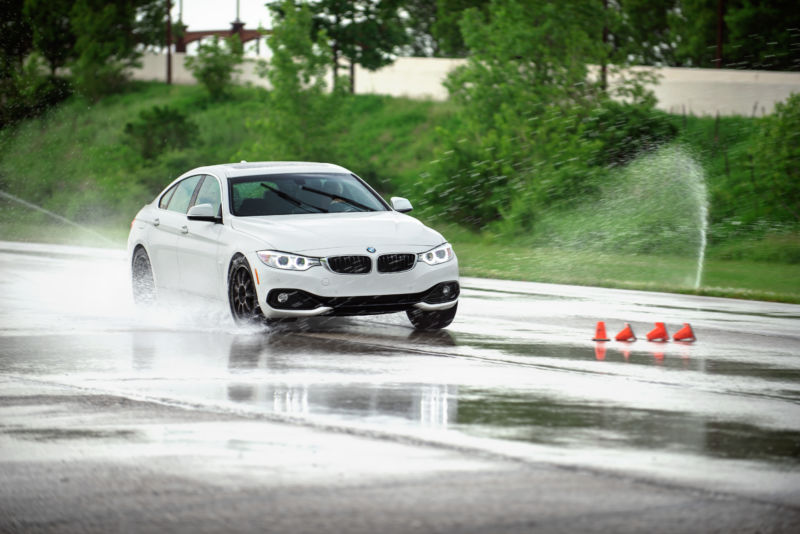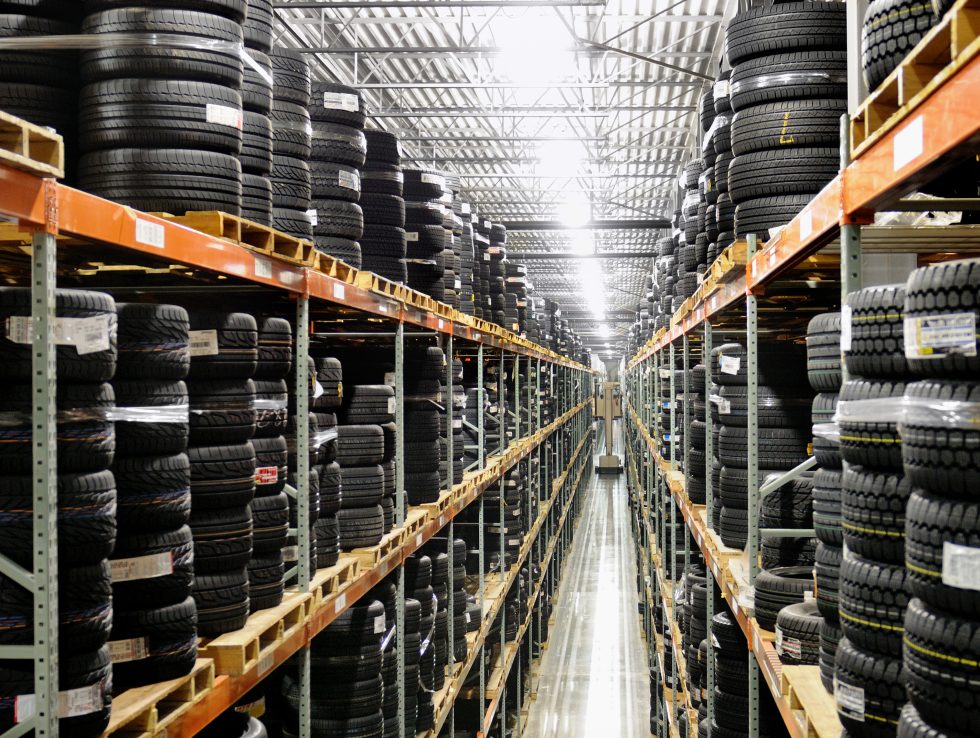

reader comments
261 with 104 posters participating, including story author
Of all the areas of automotive technology that have improved over the years, perhaps none is as significant—and as little understood by the public—as the advances in tire technology. After all, a vehicle’s tires are its sole points of contact with the road; if they lose grip, the car loses control. But to many drivers, tires are a dark art, round and black and mysterious. The cause is not helped by the tire companies themselves—few are prepared to sit down with journalists and explain in any real detail how and why their particular offerings are better than they used to be. But there is one good resource for doing some tire shopping, and it’s one you as a denizen of the Internet may already be familiar with.
It’s Tire Rack, a massive (now) online retailer of the round black things, and since 1995, the company has been doing independent tire testing as a way to give consumers the ability to cross-shop their new rubber. You don’t even need to be a Tire Rack customer to benefit. The company probably won’t like to hear it, but I’m sure I’m not alone in having done hours of research on the site trying to decide on new shoes for my old MX-5 and Saab 9-2x before going to Costco.
Actually, it’s something Tire Rack already knows. “There have always been people that want to educate themselves, particularly with a connection to safety. The Internet makes it very easy for people to find us who aren’t able to make that time investment in the process” says Woody Rogers, Tire Rack’s product information specialist. “We build out tools on the website to help people do that.”
“As a general rule, on average, people are becoming less engaged with their automotive experience and the components that go into their vehicle. Tires are their own worst enemy, they last a lot longer than they used to, and they are more resistant to impacts, among other things,” Rogers said. “Two or three decades ago, tires lasted 20,000 to 30,000 miles, and if you got stranded, you had no cell phone. Now people drive them all year and wait until the orange tire pressure monitoring system light comes on and hope it goes away. No one checks their tires once a month anymore; the tech just works too darn well.”
“But tires are one of the few things on a vehicle that has a continuing slide from brand new and awesome to worn out and slippery. Because it’s gradual, you don’t notice them degrading. Because they last longer, because they hold air better, because of TPMS, we pay even less attention to them. Then people pay less attention to the buying process,” he explained.
Let’s go testing
Because I’ve been curious about how it goes about its testing program, I arranged a chat with Rogers to find out more. “Our modern tire-testing program started in 1995 as a way to bring first-hand experience to our sales people. And this was pre-Internet,” he told me. “We like to consult with customers and give them the personality of the tire. We don’t focus on price or mileage but instead think about what it is that gives you an intimate relationship with the vehicle. It’s a relationship that lasts three to four years, so they better be right—how it rides, how it sounds, what kind of traction you have. That all really, really matters. Testing was a way to explore all the important tires we sell,” Rogers told me.
Each tire test involves three or four different tires that would all be in the same peer group—tires that a customer would conceivably cross-shop. Tire Rack maintains a test fleet—currently four BMW 430i Gran Coupes and another four V6-engined Porsche Cayenne SUVs. Each different tire being tested gets put through the same test route and is scored on subjective attributes by the test engineers as well as quantitative measurements like braking distance. Summer is the primary testing season. “We’re driving on tires mid-May to October, evaluating 30-40 each year. Usually, 20-25 are new in the marketplace. Because of our comparison style, we’re comparing the new tires with whatever’s already been ranked best in class,” Rogers explained.
When I spoke to Rogers, there was still plenty of snow on the ground in parts of the country, and talk turned to winter tires. “We test for a rank order of stopping distance in the snow, best to worse, versus stopping distance in the wet best to worst. Some of the winter testing is done in Sweden on a frozen lake. We spend a week there each year testing acceleration and braking. It has beautiful snow, lots of it, and it’s cold enough but not too cold,” he explained. “We created a weather model to look at ten-year data of stability and consistency of winter testing, and we’re yet to find anything in the US that week in, week out is likely to get as good conditions. But we also test closer to home, at a local ice rink,” he said.

Wait—an ice rink?
An ice rink? I had to know how, and why. “We use it to perform acceleration and braking testing, or cornering exercise for a demonstration. Ice rink testing requires a lot of prep work while you’re there and a lot of repetition to get a good sample size. Most people would be amazed at how rapidly changing the ice surface is between runs. It takes about 10 minutes to change tires; there’s lots of humidity and temperature changes. Representative testing might take several hours to test three to four tires,” Rogers told me.
“We need huge sample sizes to make sure we get the same rank order and relative differences across tires. It’s a very slow-motion process. We spend almost a week at the rink every year,” he explained.
It’s all done at relatively slow speeds. “We run at 12mph—you can reliably get up to that speed and stop. On winter tires, it would be easy on the Cayenne, if its tires were by the wall, to accelerate the length of the rink. By the time you get to the center line, you’re doing 25mph. For braking, you have to aim for the Zamboni door. Testing an F-150, found we needed four-wheel drive to get consistent results to get fast enough to do the braking test. On an all-season tire, it would stick the nose out of the Zamboni door. At that point, it’s only moving at a few miles per hour, but it’s scary when you’re along for the ride,” Rogers told me.
Roger’s testing program can reveal quite a lot of variation between different tires, and a model that does well in some attributes might not excel in all of them. “For example, an all-season tire that was number seven in the ranked list of best all-time wet stopping ability was actually 124th out of 136 to stop in the snow. Conversely, the tire that gave best result in the snow in 2017 was 112th in the wet,” he told me.

It’s like a cake mix
I also asked Rogers for his insights on why not all tires are created equal. “Tread compound has such a significant effect on wear life, wet weather performance etc. There’s amazing technology that goes into the tire compounds that differentiates them from each other and from tires of five years ago. But you can no longer look at a tire and know how it’s going to perform. We still look at visual cues, but they don’t tell us much. A lot of it is proprietary, or licensed in—different formulas combining the rubber and silica black,” he said.
“It’s like a cake mix, in that it matters how long you mix it, and what sequence you add ingredients. The way the rubber is formed, the filler, the silica, carbon black, the ratio and type and quality of the raw materials has a lot to do with how well the tires perform. And it also has to do with the construction of the tire. These days there are new additives, non-aromatic oils, like sunflower oil, orange, or soy. Those are more environmentally friendly and bring other properties to the tire.
“Different Manufacturers each have their own flower- or plant-based materials and are expanding the properties of the rubber to reduce the conflict between wet performance, winter performance, wear, and rolling resistance. It really is improving things, but the challenge has been finding a way to mix it in and make it work well without sacrificing another characteristic. Talking to technical guys, developing the process, then scaling up to a tire factory that builds tens of millions of tires is a big step. Doing it in small batches is easy, but making 1,000lb batches of rubber with consistency is difficult. That’s what differentiates the haves and have-nots. It’s why Michelin and Bridgestone and Continental cost more,” he said.


